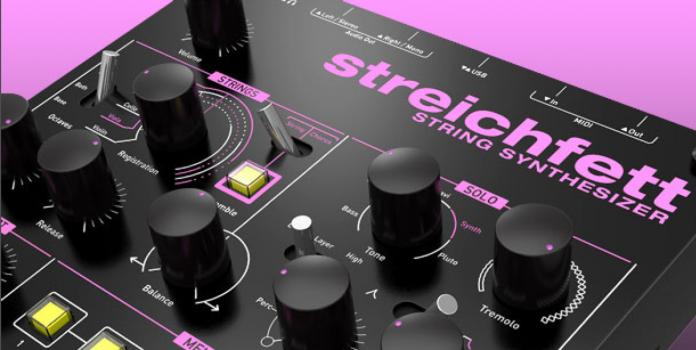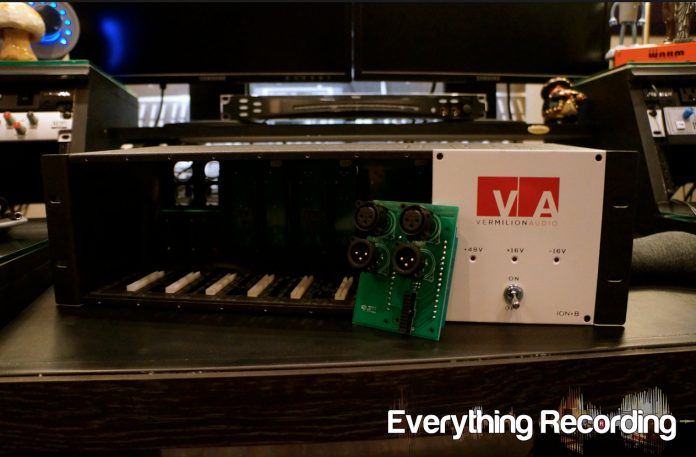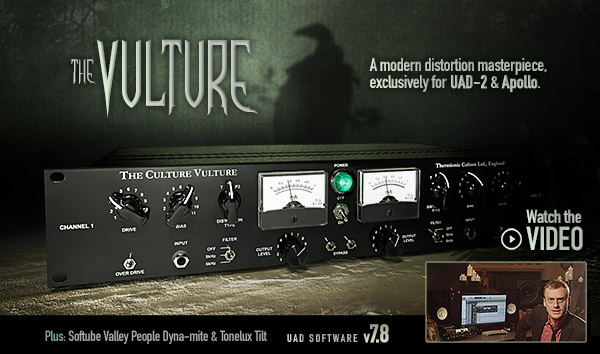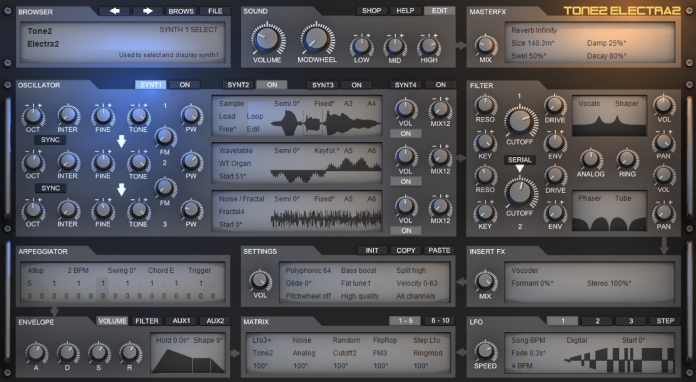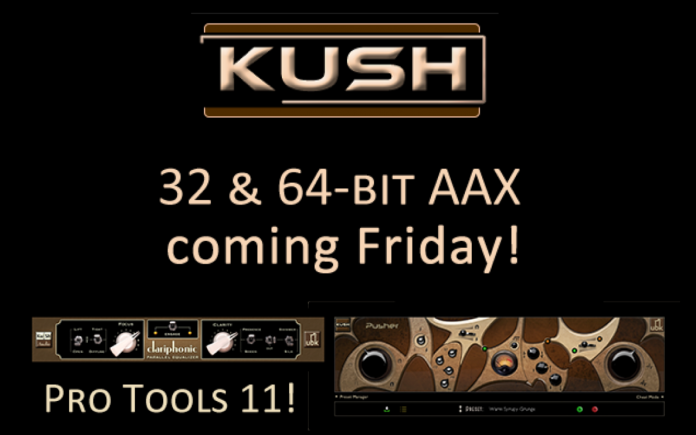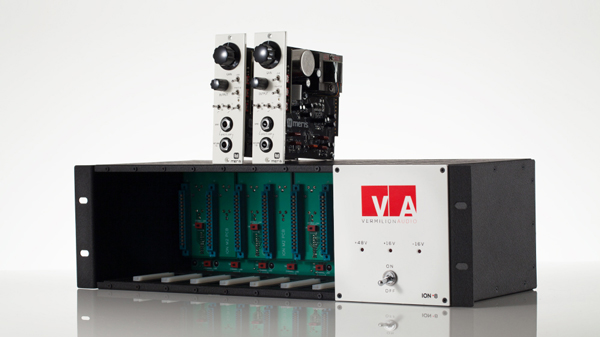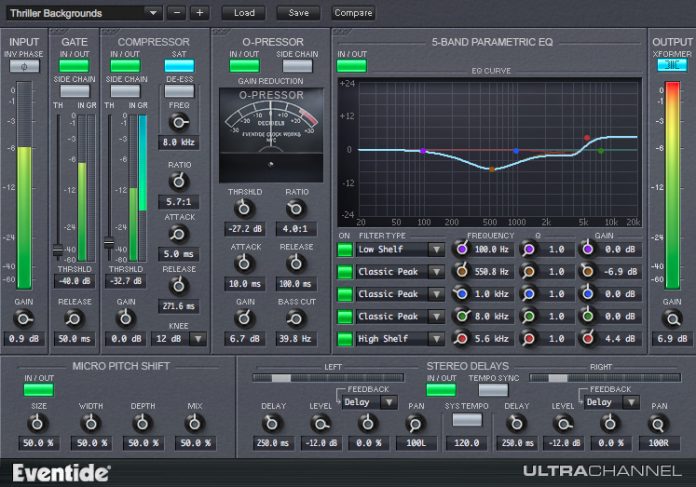It seems nowadays if you don’t manufacture at least one piece of 500 series gear, you’re almost considered out of touch with the “in crowd” of pro audio. More and more companies are re-releasing their mainstay products to accommodate these space saving racks. Some are even coming back from the grave just to release some 500 series versions. This not only gives you some of the most beloved pieces of gear; but it also places it in a format that can expand the capabilities of the various preamps, dynamics, EQ, and others to areas the initial format couldn’t quite reach. With some 500 series racks offering extra features like summing and channel linking, the days of just having a power supply and outputs in a rack aren’t enough. These extra features come at a cost to the end user and the initial hit can leave you with empty pockets and a shiny new empty 500 series rack. Vermilion Audio have devised a plan to combat this, making the transition to 500 series a little more fun and affordable… while also giving you some much needed features.
Even though Vermilion Audio is fairly new to the scene, they bring a grassroots approach to building gear. This California native company understands that entering the world of 500 series can be an expensive initial transition, but on top of that, you shouldn’t have to sacrifice features or quality just to end up with a basic rack. Because of that, Vermilion Audio have tackled the 500 series rack with a modular approach, allowing you to buy the rack at a lower cost, and expand as you need. We’ll get back to this in a bit but first, lets take a look at the features.
Enter the ION 8.
This 8 space modular 500 series rack is proudly built in the USA and features a very sturdy chassis adorned with an eye catching white front plate with the company’s logo emblazoned in red. This panel also holds your LEDs for power status as well as a front mounted on/off switch, something you usually don’t find on the front of 500 series chassis. Behind this panel is where the ultra-low noise 110/240VAC power supply lives, quietly giving you 2400mA of power overall and 300mA per slot. The unit features both DB25 and XLR inputs and outputs, making it possibly to free up some cable clutter by running one DB25 cable per input and output. On top of your standard features, the ION 8 can also stereo link consecutive pairs of slots for those modules that accommodate linking 2 units. Another extra feature this unit boasts is a channel feed switch on each slot, which will automatically send the output of a module to the next; making it possible to create channel strips of different 500 series modules. This saves you both time and money by eliminating the need for small XLR jumpers. Order of the channel strip is determined by the consecutive order of the modules.
So by now, you’re probably thinking, “This is great and all but this unit is going to send me to the poor house”. You would think that would be the case but it is actually quite the contrary. What makes this rack standout from the others is modular approach, which spreads out the initial cost of expanding your 500 series collection. Instead of having to buy a rack with all 8 slots at once, you can buy the chassis and Vermilion Audio’s M2 2 slot expansion bus. As you grow over time, you can buy more M2 modules and expand the chassis to a full, 8 outputs. Initially, I understand this can be a bit confusing so let me show you what I mean.
On top of manufacturing the 500 series chassis, Vermilion Audio have developed a patent pending adapter called the M2 which plugs into the ion8 and gives you 2 slots of 500 series. Here is what it looks like.
Each expansion card offers 2 slots worth of input, output, and stereo linking capabilities. Installation could not be any more simple. You simply plug the M2 into the slot with the Neutrik XLRs facing out
Then anchor the adapter into the chassis by screwing the M2 into the back of the chassis like so
Done and done.
From the inside of the unit, you can see your channel link and stereo link switches.
Planning will be necessary for channel or stereo linking due to the switches on the inside of the unit. Obviously the stereo link feature only works on each M2 adapter, but the channel link can essentially link all 8 channels together in the case you would ever need to do that. What I like to do is (if you have pairs of 500 series modules) feed 1 to 2 to 3 then feed 4 to 5 to 6 each with the same Preamp / Compressor / EQ combo to make a stereo bus for either tracking or as a master mix bus.
Keeping all of that in mind, lets get to the heart of the matter… how much this rack costs. I’ll start with a basic example. Say your budget gives you enough to buy 2 500 series modules. Initially the rack itself is $595.00 and at the very least you have to buy one M2 adapter for $65.00, bringing your total for a rack with 2 slots of 500 series to $660.00. As you buy more modules, you will have to buy more M2 adapters to total out 8 total slots (an ion8 has 8 slots and each M2 covers 2 slots. So a total of 4 M2 adapters will be needed). Each M2 is 65$ so in the end, the total price of the rack with all 8 slots available is $855.00. This may seem like a fairly expensive rack, but keep in mind you’re getting a USA built product with quality components and features like stereo linking and channel linking built in. On top of that, you save a few bucks by being able to expand as you go, alleviating the initial hit of buying a chassis. Not to mention it’s one of the best looking chassis I’ve seen… Yes I know looks always do not matter but it does impress the clients. While other chassis that offer the same channel and stereo linking seem less expensive, they are actually shortchanging you by offering less power per slot. There is a certain unnamed 10 slot rack that offers channel feed and stereo linking but only supplies 1600mA of power. Say you wanted to run a few tube preamps in this rack. Because it doles out power based on its needs, you will end up tapping out your rack fairly quickly and burning out your power supply. Not with this one. Since you’re getting 2400mA total, you can handle just about any situation that is thrown your way, without straining your power supply. On top of that, the power supply is built into the unit and doesn’t have to be stowed away in the bottom of you desk. We all know space is valuable in most home and professional studios… Advantage ION 8.
One of my only gripes about this unit is that the stereo and channel link are on the inside of the unit, but this can be remedied quickly by just proper planning and pulling out modules. Not really a dealbreaker but me just being nit picky. Other than that, I have no complaints. I actually liked the test model so much, that I bought it. It now proudly sits in our desk at HQ. Say hello to Everything Recording’s official 500 series rack of choice!
If you’re looking for everything you want in a 500 series rack, with the ability to grow with you, get the ION 8. If you have deep pockets and aren’t concerned with price… still get the ION 8.
For more information and to purchase, visit http://www.vermilionaudio.com



